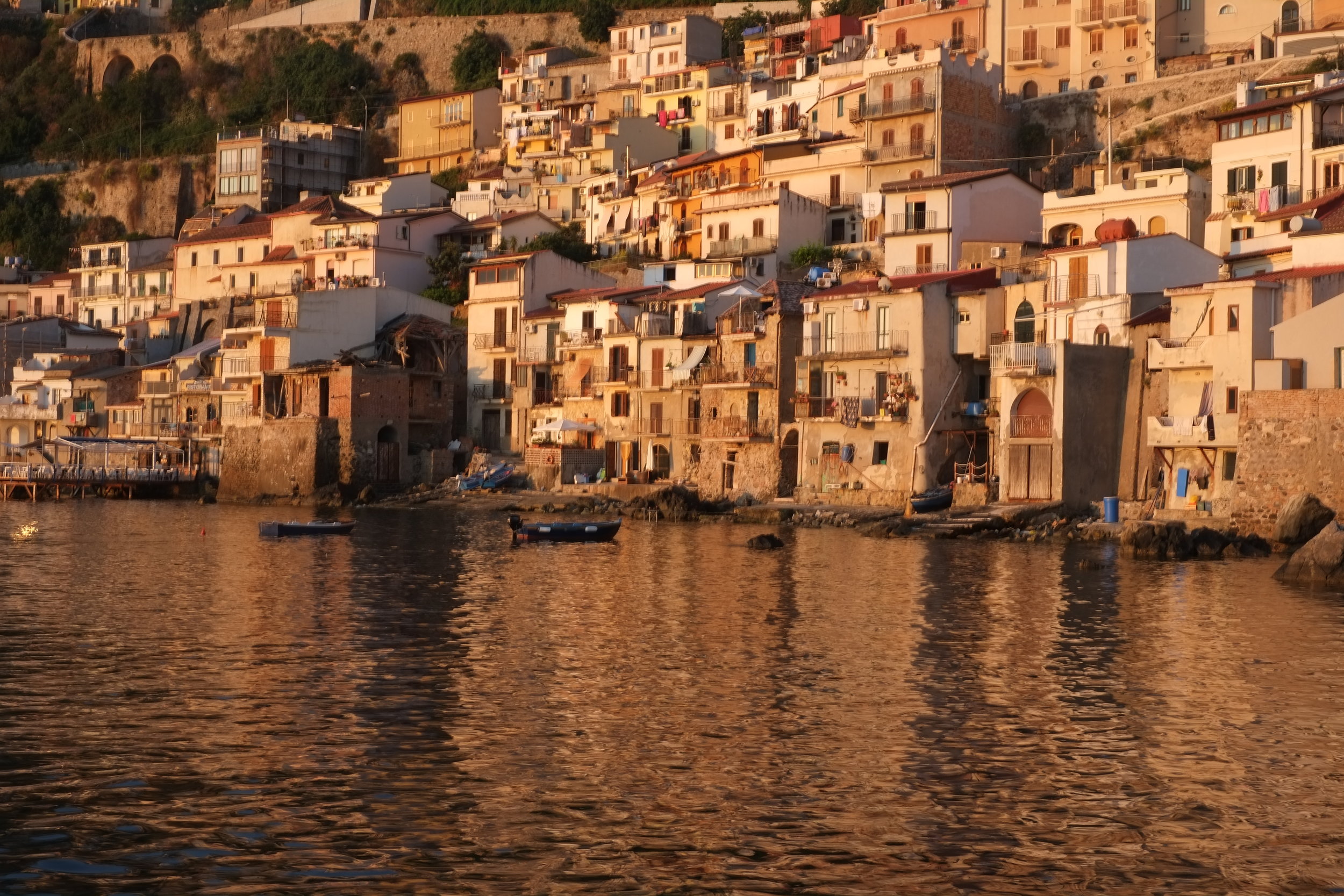While I said that Sicily is basically a triangle, there is actually a little bit of a left coast to the island. Once you round San Vito Lo Capo there is a small stretch of coastline where you’re heading basically south.
Capes are like the punctuation marks is the narrative of our voyage. The trouble is you can never tell exactly which one they will be. Sometimes they are benign like ampersand or semi-colon and other times they are aggressive like full stop (and go back where you came from). Today wehave the former, just a slight change of nuance but before and after the cape is pretty much the same. The swell has died down to a gentle roll and we have a current helping us motor along.
Our destination is one of the Egadi Islands off the coast of Sicily. These are part of a marine park and there are regulations on what you can and cannot do here. We choose one of the smaller islands and grab a mooring buoy in a little bay sheltered from the prevailing wind.
As we move back towards the mainland (of Sicily), the water is shallower and the sandy bottom gives it the perfect hue for a tranquil day.
We even let Spot helm.
Actually she does this all the time but just not in this character.
Our next stop is Marsala (where the fortified wine comes from). we had some idea of what we wanted to do here, but sometimes it’s best to go with the flow. In Palermo we are parked next to a French couple. We didn’t speak much but the next night they arrived in Castellammare a bit after us. And now when we aerobe in Marsala, they are parked just down the quay.
Pasqual and Annie are academics and archaeologists from Nice in France. They tell us that there is a good exhibit in the local museum relating to a 2000 year-oldship that was discovered in the water near Marsala. They are going to get a personal guided tour and we can join them.
The thing I took away from the visit was the degree of interconnectedness in the Mediterranean 2500 years ago. Ships are owned by Greeks, leased by Turks and transport cargoes from North Africa to Italy and Rome. We see inscriptions from Lefkas in Greece (where True Colors spent three winters). It seems a long way away but we’ve done it and so, I suppose, could those guys in their galleys with square-rigged sails. It’s a weird feeling of historical connectedness.
So we don’t see much of Marsala and don’t actually drink any of the fortified wine. Maybe next time… However, we did introduce a new concept. We all understand "food miles" and we told you about "food yards" where the restaurants and the fishmongers are just steps away from the boats that bring the fish in. But in Marsala we have the concept of "wine yards". The winery was right next to the supermarket where we could buy the wine. Talk about a convenience store! These Sicilians are on to something.
But in Marsala as we are walking out of the marina to get some provisions, a young lady in a car stops and asks if we want a lift into town. (We’re only going to the nearby supermarket, so it doesn’t work this time.) But this is the second time this has happened. The first time back in Roccella we thought this is either very nice or this little old lady is some kind of serial killer. But no, people in southern Italy are just that nice and that friendly. Not something that would happen much in many parts of the US - sad.
The next day we set out and have our first serious encounter with fog. We have about an hour or so where we can see very little and there are fishing boats around. Fortunately we have our radar and can see through the fog electronically at least. Just as we are coming out of the fog, the local coastguard comes on the VHF to broadcast a warning of banks of fog and "very poor" visibility.
"Thanks we know".
We continue on to Sciacca. Another town that, according to he plot book, doesn’t have much going for it. But we find it scruffy but charming. It has a lovely trattoria that serves great seafood. When we are coming back from the restaurant we meet a Dutch couple that Lori met in Marsala. Over a beer, we chat about sailing, life, politics and sailing in about those proportions.
It is gentle and easy.







































































































